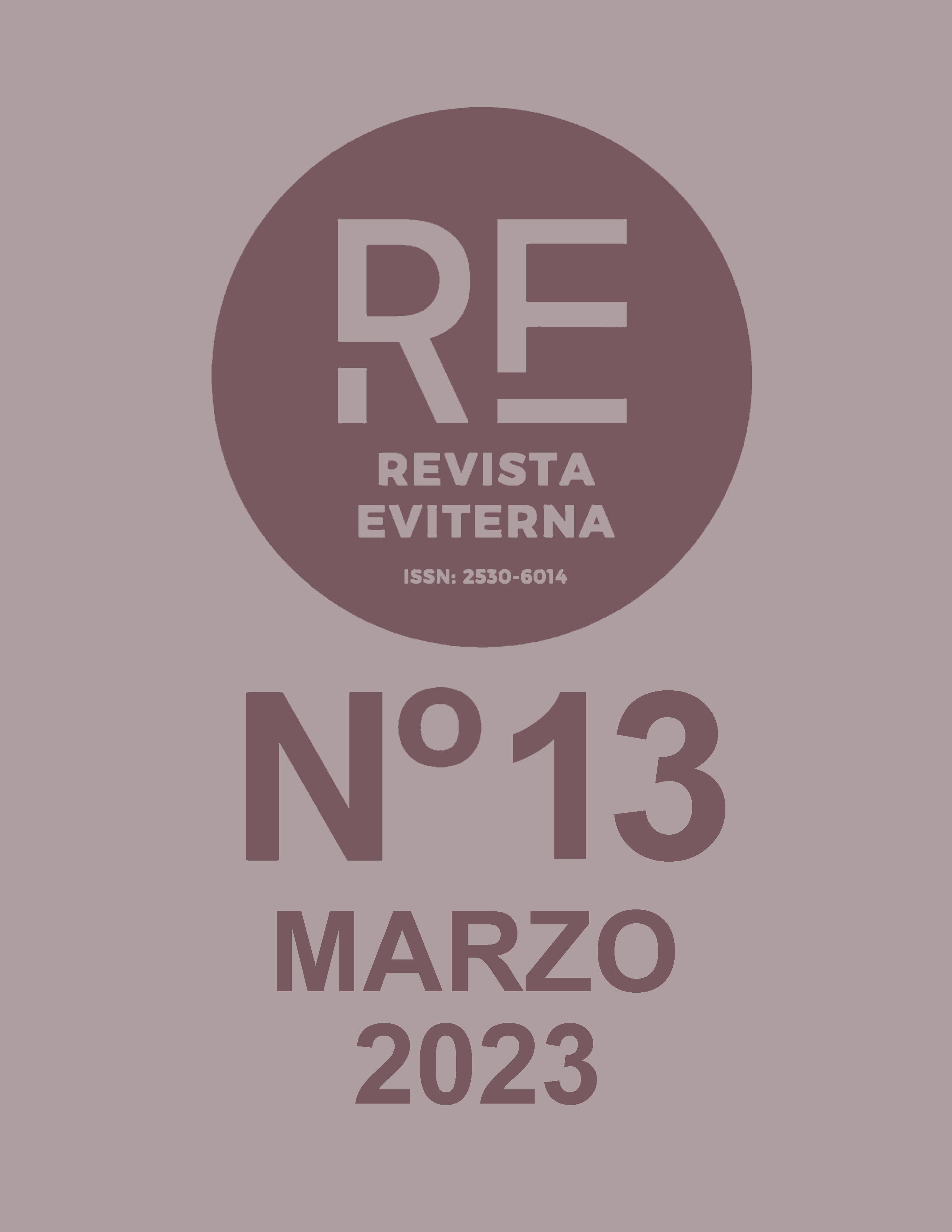The Political-religious Background Against Iconoclasm in John of Damascus
DOI:
https://doi.org/10.24310/Eviternare.vi13.15735Keywords:
chalcedonian, dyothelitism, iconophile, SabaïtesAbstract
The popularity of John of Damascus (ca. 675-ca. 754) as a theologian and defender of sacred images is widely recognized, although his influence on the Iconoclastic controversy during the 8thand 9thcenturies is difficult to assess. The sources that can provide reliable facts about the author and his work are problematic, which make it difficult to correctly put in context the monk from Damascus. In this paper, we intend to show his opposition to the meddling of the temporal sphere of power in ecclesiastical affairs, as it is clear from his apology for icons. We believe that, when related to the opposition of Maximos the Confessor a century earlier against the Monothelite heresy, it could properly reflect the political and doctrinal background of the controversy about sacred images that led to institutionalized Iconoclasm to excommunicate our author and condemn him to a damnatio memoriae.Downloads
Metrics
References
Ables, S. (2018). Was the reestablishment of the Jerusalem Patriarchate a “Proto-Melkite” gambit orchestrated by John of Damascus –Quid Pro Quo: Cathedral for Patriarchate? ARAM 30 (1-2) 1-13.
Alexakis, A. (1996). Codex Parisinus Graecus 1115 and Its Archetype. Dumbarton Oaks Studies.
Auzépy, M.-F. (2007). L’histoire des iconoclastes. Bilans de recherche.
Brubaker, L.-Haldon, J. F. (2001). Byzantium in the Iconoclast Era (ca. 680-850). The sources: an annotated survey.Aldershot.
--- (2011). Byzantium in the Iconoclast Era (ca. 680-850): A History, Cambridge University Press.
Burgman, L. (1983). Ecloga. Das Gesetzbuch Leons III. und Konstantinos V. Frankfurt am Main.
Chabot, J. B. (1924). Chronique de Michel le Syrien, patriarche jacobite d’Antioche (1166-1199), vol. 2. Paris.
Dagron, G. (1993). Le christianisme byzantine du VIIe au milieu du XIe siècle, en Dagron, G.-Riché, P.-Vauchez, A. (dir.), Évêques, moines et empereurs (610-1054), Paris, 1-348.
Gallina, M. (2016). Incoronati da Dio. Per una storia del pensiero politico bizantino. Viella s.r.l.
Geerard, M. (1979). Clavis Patrum Graecorum, vol. 13. Turnhout.
Gero, S. (1977). Byzantine Iconoclasm during the reign of Constantine V with particular attention to the Oriental sources. Corpus Scriptorum Christianorum Orientalium.
Gouillard, J. (1968). Aux origines de l’iconoclasme: le témoignage de Grégoire II, Travaux et Mémoires 3, 243-307.
Grumel, V. (1958). La chronologie. Traité d’études byzantines, vol. 1. Paris.
Hennephof, H. (ed.) (1969). Textus Byzantinos ad Iconomachiam Pertinentes. E.J. Brill.
Kontouma, V. (juin-juillet 2010). Jean Damascène: l’homme et son ouvre dogmatique, Coll. “Connaissance des Pères, 2-20.
--- (2010). Jean III d’Antioche (996-1021) et la Vie de Jean Damascène (BHG 884), Revue des Études byzantines 68, 127-147.
Louth, A. (2004). St. John Damascene: Tradition and Originality in Byzantine Theology. Oxford University Press.
--- (2006). Maximus the Confessor, London.
Mango, C.-Scott, R. (eds. and trans.) (1997). The Chronicle of Theophanes Confessor. Byzantine and Near Eastern History AD 284-813. Clarendon Press.
Mango, C. (text, translation, and commentary) (1990). Nikephoros Patriarch of Constantinople Short History. Dumbarton Oaks.
Mansi, J. D. (ed.) (1767). Sacrorum conciliorum nova et amplissima Collectio. Firenze.
Melioranskij, M. B. (1901). Georgij Kiprjanin i Ioan Ierusalimljanin. Saint-Petesbourg.
Migne, J.-P. (ed.) (1857-1903). Patrologiae Cursus Completus, series Graeco-Latina: Vita Damasceni (BHG 884); 140, cols. 812-885 (BHG 885).
Munitiz, J. A. et al. (1997). The letter of the three patriarchs to Emperor Theophilos and related texts, Camberley: letter of pseudo-John of Damascus: 143-205, English trans. 142-204.
Munitiz, J. (1997). Wonder-working ikons and the letters to Theophilos, en Garland, L. (ed.), Conformity and non-conformity in Byzantium, Armindale, 115-123.
Russo, L. (a cura di) (1999). Vedere l’invisibile. Nicea e lo statuto dell’Immagine. Aesthetica edizioni.
Signes Codoñer, J. (2013). Melkites and Icon Worship during the Iconoclastic Period, Dumbarton Oaks Papers, 67, 135-187.
Speck, P. (1990). Ich bin’s nicht, Kaiser Konstantine ist es gewesen, Poikila Byzantina 10, 579-635.
Torres Guerra, J. B. (introducción, edición bilingüe y notas) (2013). Juan de Damasco. Sobre las imágenes sagradas. Ediciones Universidad de Navarra, S.A.
Downloads
Published
How to Cite
Issue
Section
License
All the contents published in Revista Eviterna are subject to the Creative Commons Reconocimento-NoComercia-Compartirigual 4.0 license, the full text of which can be found at <http://creativecommons.org/licenses/by-nc-sa/4.0>
They may be copied, used, disseminated, transmitted and publicly exposed, provided that:
The authorship and original source of your publication (Journal, editorial and URL of the work) are cited.
They are not used for commercial purposes.
The existence and specifications of this use license are mentioned.

Copyright is of two kinds: moral rights and patrimonial rights. Moral rights are perpetual, inalienable, inalienable, inalienable, inalienable and imprescriptible prerogatives.
In accordance with copyright legislation, Revista Eviterna recognizes and respects the moral rights of the authors, as well as the ownership of the economic right, which will be transferred to the University of Malaga for dissemination in open access.
The economic rights refer to the benefits obtained by the use or disclosure of the works. Revista Eviterna is published in open access and is exclusively authorized to carry out or authorize by any means the use, distribution, disclosure, reproduction, adaptation, translation or transformation of the work.
It is the responsibility of the authors to obtain the necessary permissions of the images that are subject to copyright.






12.png)
